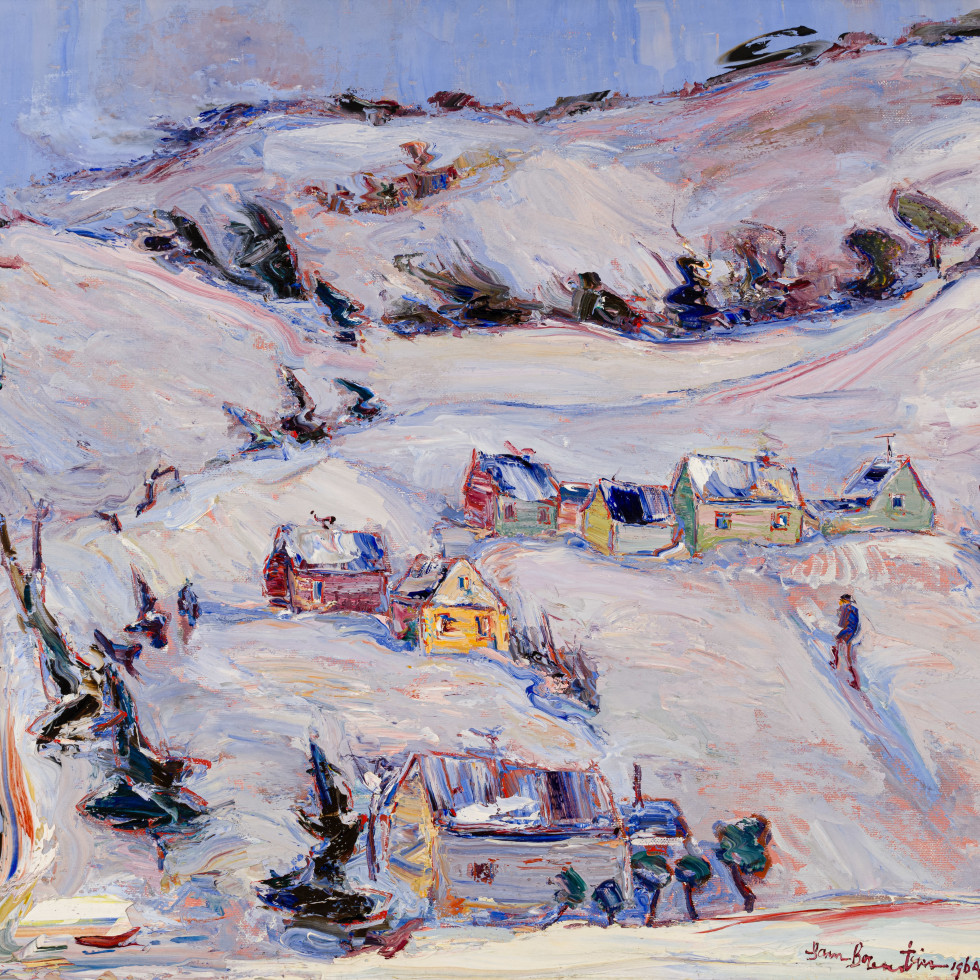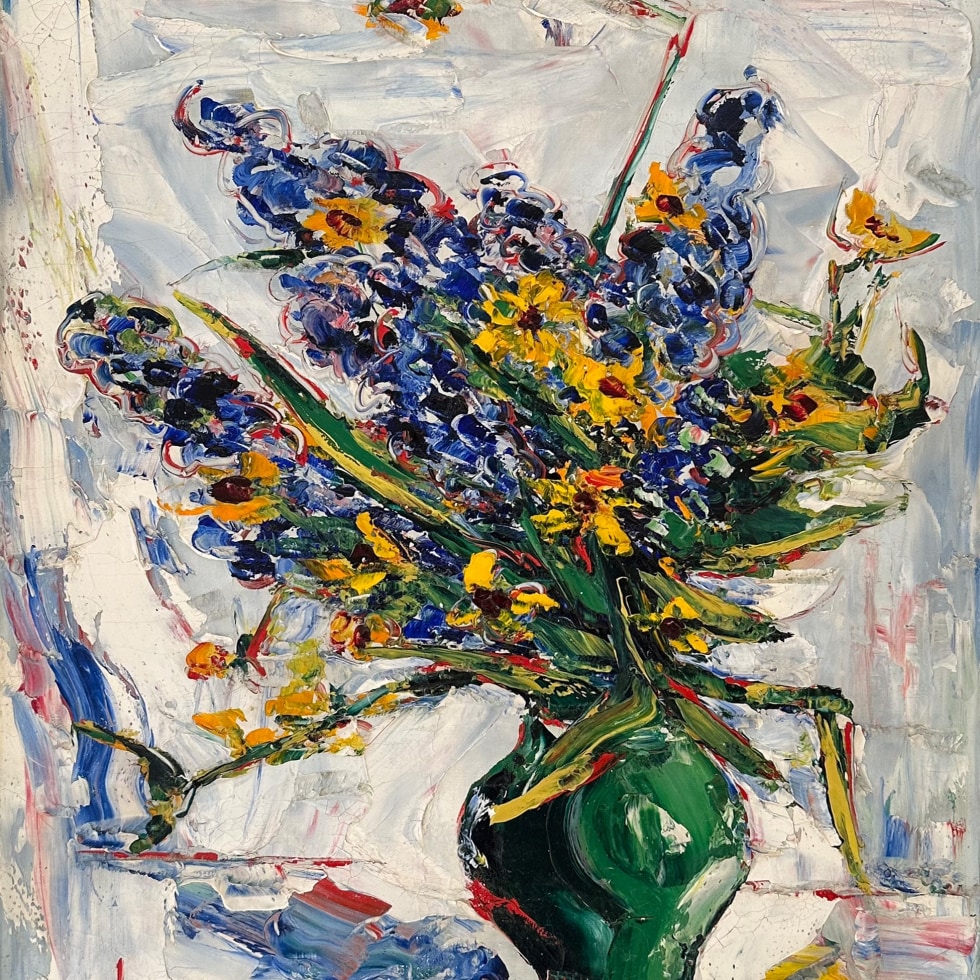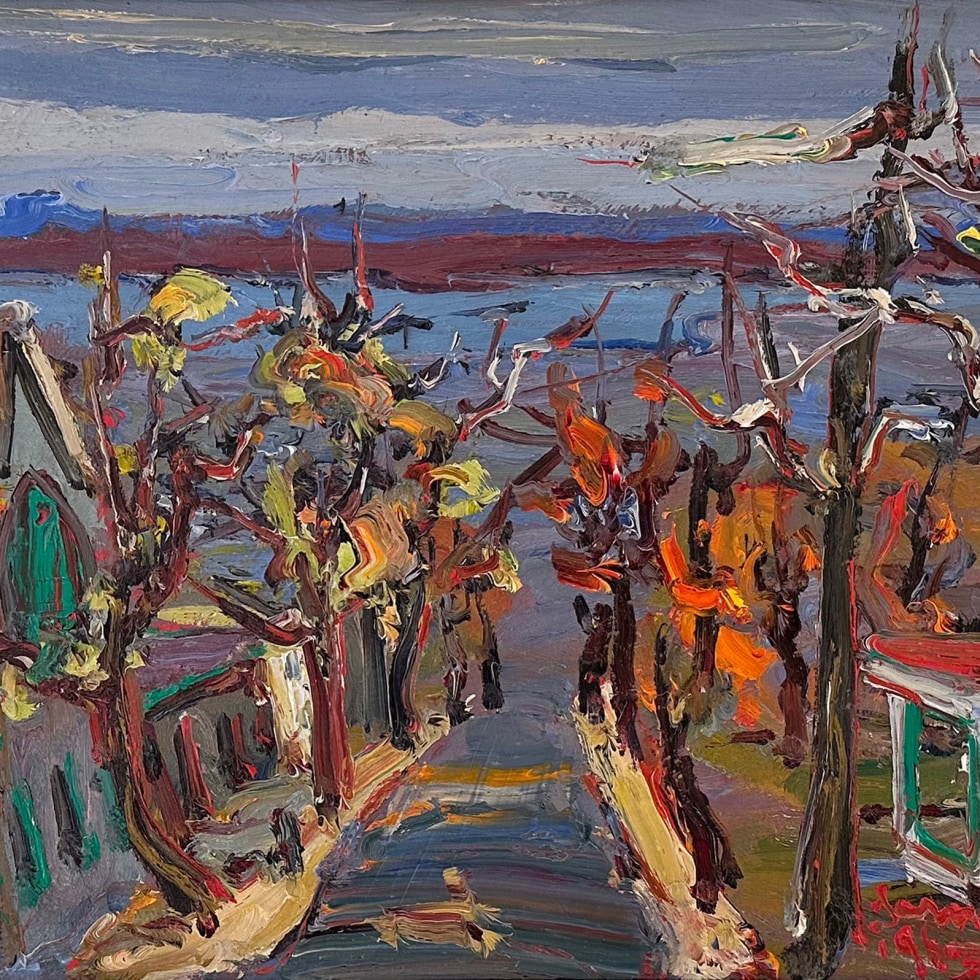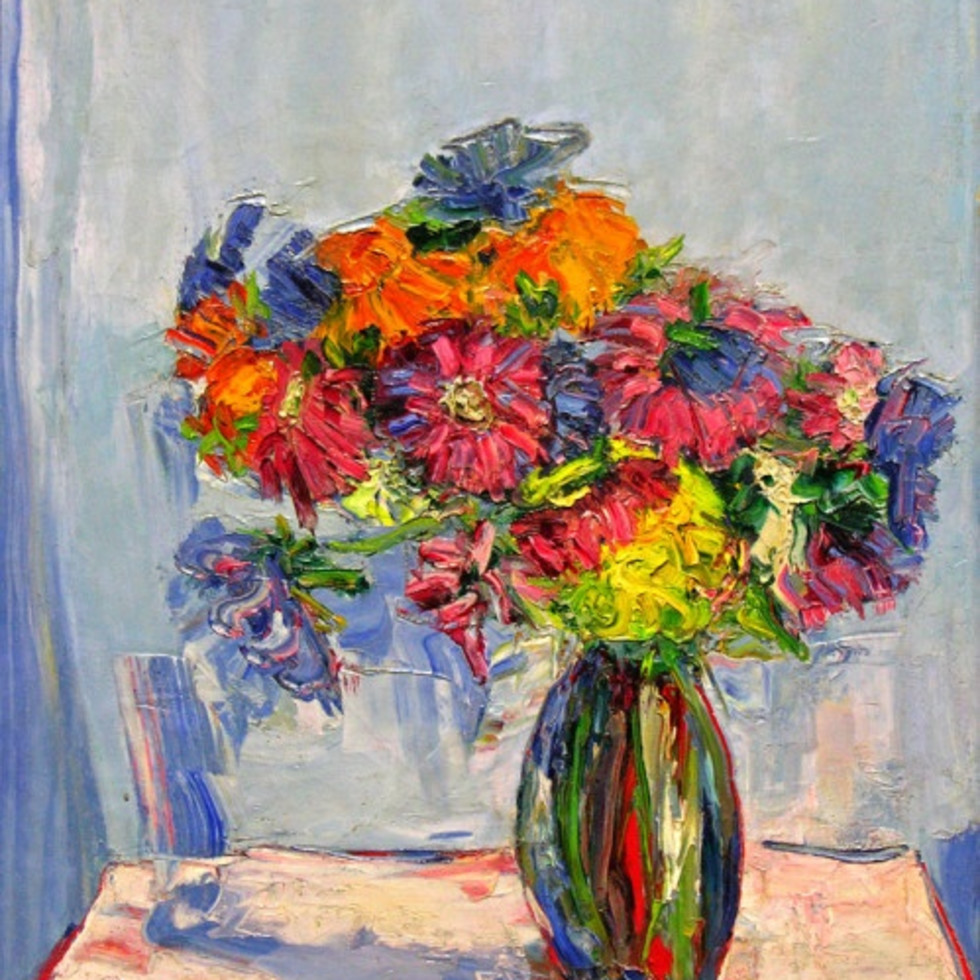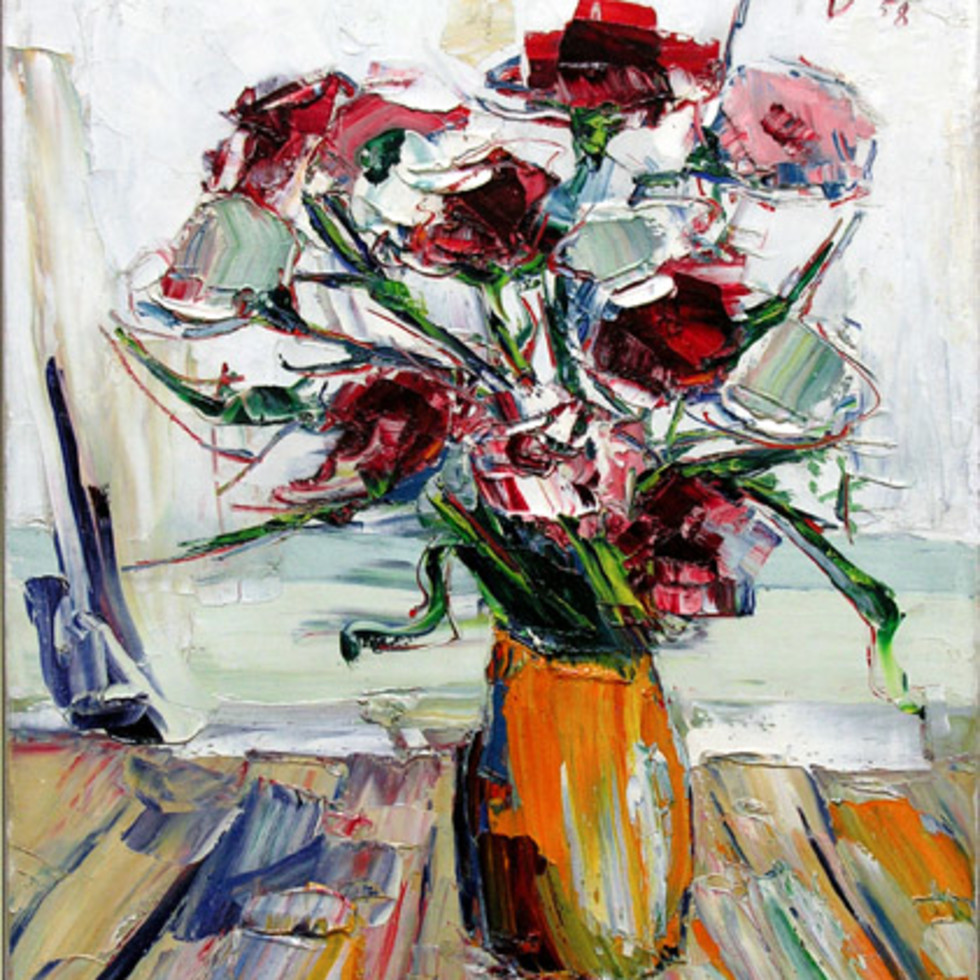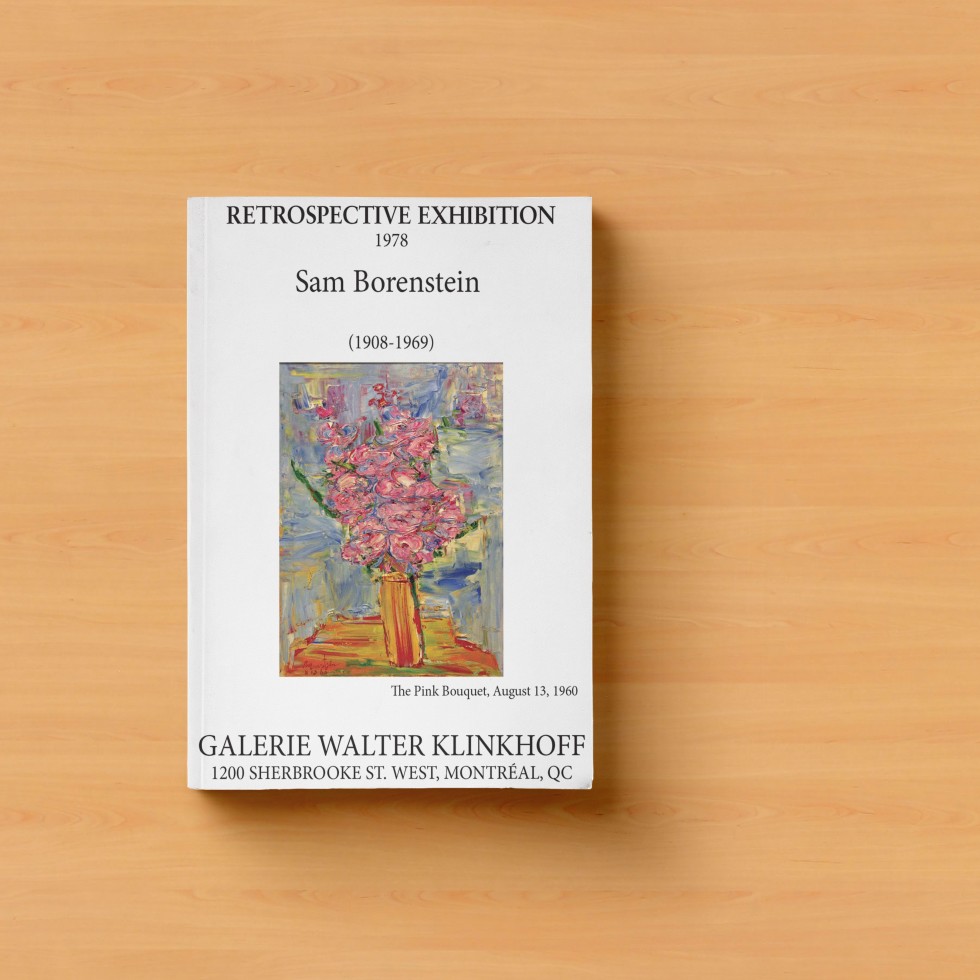Notable Sales
Montreal West Winter, 1961
Oil on canvas - Huile sur toile
18 x 32 in
45.7 x 81.3 cm
45.7 x 81.3 cm
Sold
Provenance
Estate of the artist, Montreal. - Succession de l'artiste, Montréal.Exhibitions
Sam Borenstein / Sam Borenstein, Montreal Museum of Fine Arts (June 29 - September 18, 2005), The Justina M. Barnicke Gallery, Hart House, University of Toronto, Ontario (October 6 - November 3, 2005), The Owens Art Gallery, Mount Allison University, Sackville, New Brunswick (January 13 - February 25, 2006); Sam Borenstein and the Colours of Montreal, Yeshiva University Museum, New York, New York 2011. - Sam Borenstein / Sam Borenstein, Musée des Beaux arts de Montréal (29 Juin - 18 Septembre, 2005), l'exposition a ensuite fait partie d'une tournée et a été exposée au musée Justina M. Barnicke Gallery, Hart House, l'Université de Toronto, Ontario (6 Octobre - 3 Novembre, 2005), la Galerie d'art Owen Art Gallery, l'Université Mount Allison, New Brunswick (13 Janvier - 25 Février, 2006); Illustré sur la couverture du catalogue acomapgnant l'exposition du Musée des Beaux arts de Montréal; Sam Borenstein and the colors of Montreal (v.o. anglaise), Musée de l'Université Yeshiva, 2011.Alan Klinkhoff Gallery, Toronto, Lawren Harris & Canadian Masters: Historic Sale Celebrating Canada's 150 Years, April 1, 2017.
Literature
Sam Borenstein, Montreal Museum of Fine Arts, 2005, Illustrated on page 75. - Sam Borenstein, Musée des beaux-arts de Montréal, 2005, Illustratrée à la page 75.
Borenstein seems to have had heightened senses.
He marvelled at the shapes formed by clouds, at the menacing atmosphere preceding a summer storm, at the power and choreography of the winter wind. He marvelled at the dry burning heat of the August sun, at the cacophony of squawk- ing chickens, at the intoxicating fragrance of wildflowers. It was as though all his perceptions, sight, sound, touch, taste, and smell were tuned to a heightened level.
In Montreal West in Winter, Borenstein pictures an infinity of colours in snow. It makes me think of the Inuit who have at least twenty-five words to describe snow when I look at the millions of colours in this winter scene.
It is a thought Borenstein had a sixth- sense or x-ray vision.
In Montreal West in Winter he makes vis- ible the life force in trees, the heat emanat- ing from them, the sap running through them, and he paints an aura or halo of red around them.
The blowing wind in the trees, is captured in this painting through motion-blur and through the multiplying of the branches. I’m reminded of the Lascaux cave drawings where the running bison is depicted through a multiplication of its legs in all their positions.
For Borenstein, painting was more than his profession, it was his calling, his solace, his meditation. When he painted, he made the subject his, he became one with the subject.
Borenstein saw and expressed the sacredness of life, and its mysterious and awesome beauty.
I see his paintings as ‘Odes to Life.’ To this day, the odour of oil paint for me, is a fragrance rather than an odour. It is a nostalgic and enchanting aroma, that brings me back to my childhood, when I was the daughter of the artist.
Joyce Borenstein
From Lawren Harris & Canadian Masters, Alan Klinkhoff Gallery, 2017
He marvelled at the shapes formed by clouds, at the menacing atmosphere preceding a summer storm, at the power and choreography of the winter wind. He marvelled at the dry burning heat of the August sun, at the cacophony of squawk- ing chickens, at the intoxicating fragrance of wildflowers. It was as though all his perceptions, sight, sound, touch, taste, and smell were tuned to a heightened level.
In Montreal West in Winter, Borenstein pictures an infinity of colours in snow. It makes me think of the Inuit who have at least twenty-five words to describe snow when I look at the millions of colours in this winter scene.
It is a thought Borenstein had a sixth- sense or x-ray vision.
In Montreal West in Winter he makes vis- ible the life force in trees, the heat emanat- ing from them, the sap running through them, and he paints an aura or halo of red around them.
The blowing wind in the trees, is captured in this painting through motion-blur and through the multiplying of the branches. I’m reminded of the Lascaux cave drawings where the running bison is depicted through a multiplication of its legs in all their positions.
For Borenstein, painting was more than his profession, it was his calling, his solace, his meditation. When he painted, he made the subject his, he became one with the subject.
Borenstein saw and expressed the sacredness of life, and its mysterious and awesome beauty.
I see his paintings as ‘Odes to Life.’ To this day, the odour of oil paint for me, is a fragrance rather than an odour. It is a nostalgic and enchanting aroma, that brings me back to my childhood, when I was the daughter of the artist.
Joyce Borenstein
From Lawren Harris & Canadian Masters, Alan Klinkhoff Gallery, 2017






